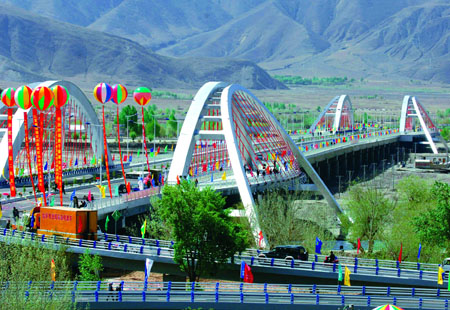| Before the peaceful liberation in 1951, Tibet was a land-locked region without any modern industry. The locals lived on livestock breeding, and also on farming and handicraft business. Since the democratic reform in 1959, and especially the reform and opening up policy carried out after late 1978, Tibet has accelerated its economic construction, not only establishing modern industry and transport and telecommunication service sectors, but also making much headway in the original agriculture, animal husbandry and forestry sectors and commercial industry. In 2006, making full use of the opening of the Qinghai-Tibet Railway, Tibet maintained rapid social and economical development. GDP reached 29.005 billion Yuan; calculated in accordance with comparable prices, it meant a 13.4 percent increase from the previous year, the fastest growth in recent years. Of this, the added value of the primary sector was 5.104 billion Yuan (up 6.2 percent), secondary industry 8.003 billion Yuan (up 22.9 percent) and the tertiary sector 15.898 billion Yuan (up 11.7 percent). Per-capita GDP reached 10,396 Yuan, a rise of 11.9 percent.

The Lhasa Liuwo Bridge opened to traffic on April 30, 2007. It is the first overpass built in Tibet.
The proportion of added value of the three sectors was 17.6 percent, 27.6 percent and 54.8 percent respectively. Compared with 2005, the figures represented a fall of 1.5 percentage points for primary industry, and an increase of 2.3 and 0.8 percentage points for the secondary and tertiary sectors respectively.
Meanwhile, a number of preponderant major enterprises and non-State enterprises with Tibetan characteristics are coming to the fore, with various economic activities constantly developing in scale and variety. In 2006, the number of individual industrial and commercial households and private enterprises increased by over 7,500, the largest expansion ever. |





